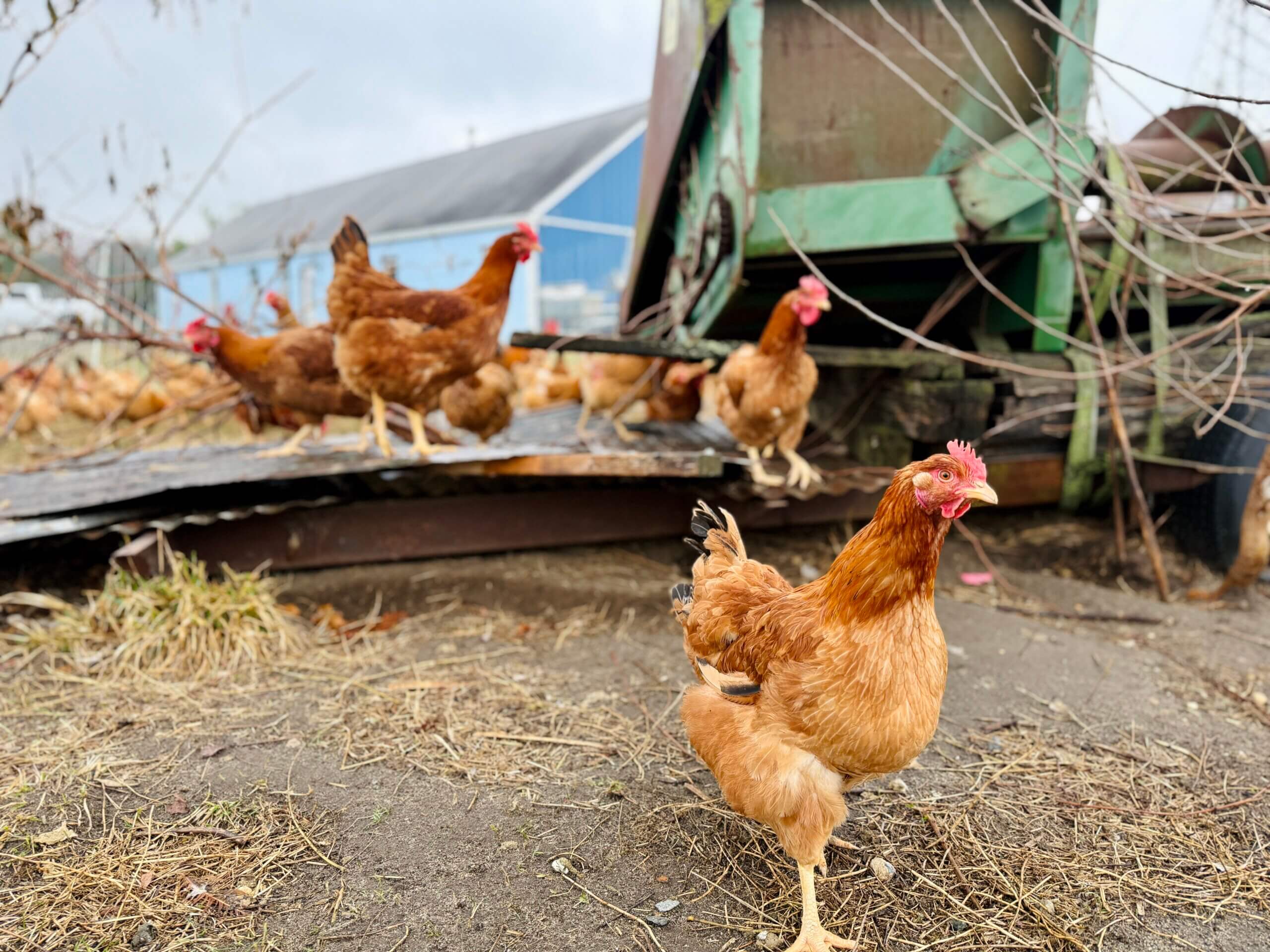Uncategorized
Hundreds of rabbis say Biden’s plan to fight antisemitism should embrace a disputed definition
WASHINGTON (JTA) — More than 550 rabbis are calling for the Biden administration’s forthcoming strategy on fighting antisemitism to include a definition of anti-Jewish bigotry that has come under debate.
The letter was sent as progressive groups are seeking to dissuade the administration from using the definition because they believe it chills legitimate criticism of Israel. The letter’s signatories disagree with that assessment.
“IHRA is critically important for helping to educate and protect our congregants in the face of this rising hate,” said the rabbis’ letter, which was sent to the White House on Friday via the Conference of Presidents of Major American Jewish Organizations. The acronym IHRA refers to the 2016 working definition of antisemitism crafted by the International Holocaust Remembrance Alliance.
“We believe it is imperative that in its National Strategy to Combat Antisemitism, the administration formally embrace the IHRA Working Definition as the official and only definition used by the United States government and that it be used as a training and educational tool, similar to European Union countries’ use of the definition in their Action Plans,” the letter said.
The IHRA document consists of a two-sentence definition of antisemitism followed by 11 examples of how antisemitism may manifest. Most of those examples concern speech about Israel that the IHRA defines as antisemitic. Israel critics, and some progressive supporters of Israel, say two of those examples are so broad that they inhibit robust criticism of Israel: “Applying double standards by requiring of [Israel] a behavior not expected or demanded of any other democratic nation” and “Denying the Jewish people their right to self-determination, e.g., by claiming that the existence of a State of Israel is a racist endeavor.”
The letter’s signatories hail from all three major Jewish denominations, though the list of names includes few leaders of the movements. The Reform movement has said IHRA is a useful guide but has opposed using it in legislation.
Among the signatories are rabbis known to be close to President Joe Biden, including Michael Beals, a Delaware rabbi who played a prominent role campaigning for the president in 2020, and Rabbi Charlie Cytron-Walker, the rabbi who protected his congregants during a hostage crisis at a Texas synagogue last year.
If the Biden administration does include the IHRA working definition in its plan, it won’t exactly be a surprise. Soon after his inauguration, a Biden administration official called the IHRA document an “invaluable tool,” and one month later, Secretary of State Antony Blinken said the administration “enthusiastically embraces it.” The working definition has been endorsed by past administrations of both parties and, in 2019, Donald Trump signed an executive order instructing the Department of Education to consider it when weighing civil rights complaints concerning Jews. It has been adopted in varying forms by a range of national and local governments, universities, professional sports teams and other bodies.
But now, according to Jewish Insider, progressive groups are asking the Biden administration to forgo including the definition in a soon-to-be-published strategy to combat antisemitism. Biden said at an event on Tuesday that the strategy would have 100 recommendations for action, and insiders say it may be published as soon as next week.
A number of coalitions have proposed alternative definitions that contain more limited definitions of when anti-Israel speech is antisemitic. The letter from the rabbis does not mention Israel, but cautions against adopting a definition other than IHRA’s.
“We believe the adoption of any definition less comprehensive than the IHRA definition would be a step backwards for this administration and make our work on the ground significantly harder,” it said.
In a meeting this week with members of the press, Biden’s lead antisemitism monitor, Deborah Lipstadt, who is a member of the administration’s antisemitism task force, would not say if the IHRA definition would make it into the strategy, accordin. She said it was “effective” and helped her in her work, but added, “I’m not going to preempt what the White House is going to say or not say.”
William Daroff, the CEO of the Conference of Presidents, said the notion that the IHRA working definition inhibits Israel criticism has been belied by the “slew of people critical of Israeli policy [who] have not been muted because of the IHRA definition.” Daroff pointed in particular to widespread criticism of the Israeli government’s plan to weaken the judiciary, which critics have said would undercut Israel’s democracy and remove a curb on human rights abuses.
“A comprehensive report on antisemitism might not be comprehensive without defining antisemitism,” Daroff told the Jewish Telegraphic Agency. “It might undercut American efforts to combat antisemitism abroad by weakening the clear importance of the IHRA definition.”
—
The post Hundreds of rabbis say Biden’s plan to fight antisemitism should embrace a disputed definition appeared first on Jewish Telegraphic Agency.
Uncategorized
This Jewish family is betting the farm on Thanksgiving turkeys like bubbe cooked

NARVON, PA – A thick, rolling gobble fills the barn in Lancaster County, Pennsylvania as several hundred turkeys stand shoulder to shoulder, shifting in waves like a loud, feathered mob.
They don’t know it, but they’re part of a gamble — one that could reshape the kosher poultry business in America. The question is: Will enough people want a Thanksgiving turkey, at a price between $140 and $400, that tastes like bubbe’s did?
Supermarket poultry has become a fixture of the Jewish kitchen — easy to find, easy to cook, easy to forget. As organic and ethically raised meats gain traction across the country, many kosher families are still left with factory-farmed options that claim tradition but taste like compromise.
This flock belongs to Chosen Farms, a kosher heritage poultry startup run by Yadidya and Miriam Greenberg, a husband-and-wife team who split their work between two states: turkeys here in Lancaster County with help from an Amish farmer, and chickens on 30 acres in Pemberton, New Jersey.
Once the turkeys reach market weight, they begin a Thanksgiving relay — first to a kosher processor in upstate New York, then to Pemberton to be frozen and packed. Labels come off the printer like boarding passes, rattling out destinations: California. Colorado. Florida. Nevada. New York. Orders pile up like suitcases in an airport the day before the holiday.
These are heritage birds — the kind that existed before industrial farming redesigned poultry around speed and uniformity. They come from older bloodlines that could walk, flap their wings and develop muscle over time. Today’s supermarket birds are bred to grow fat fast, their skin stretched thin over rapidly expanding bodies. They arrive like something delivered by algorithm. Heritage birds arrive with history.

The turkeys live twice as long as their grocery store counterparts. They keep the genetics, and much of the flavor, of the past. If you want your chicken soup to taste like your bubbe’s version, you start with one of these.
As a teenager, Miriam volunteered on farms in Maryland and later trained as a classical chef in New York. She speaks about modern poultry with the bluntness of someone who has tasted too much of it. “They neutered all the flavors. It just tastes like mush,” she said.
Heritage birds, she insists, give you something more flavorful. “It’s like tasting butter after a lifetime of margarine.”
Heritage breeds and Hanukkah goose
Miriam isn’t the only one making the case for flavor. Gidon van Emden, CEO of Kol Foods, which specializes in kosher grass-fed beef, lamb and pasture-raised chicken, has seen growing curiosity about heritage breeds in the kosher market. Consumers tell him the difference is noticeable immediately.
Van Emden believes the kosher market is hungry — not just for cleaner food, but for food that feels intentional. “If you mistreat the animal — bad feed, bad genetics — it’ll taste more watery,” he said.
He and Yadidya go back years. Greenberg taught him how to be a shochet, a butcher. Now, Kol Foods and Chosen Farms are among the few companies trying to expand what kosher poultry can be.
Yadidya bought the Pemberton property in 2022, and soon after married Miriam. The pasture is in the same swath of South Jersey where Holocaust survivors resettled and rebuilt their lives running chicken farms.
These day, in the kitchen, Yadidya boxes frozen turkeys — lining cardboard with insulated wrap, dropping in ice packs and sealing each shipment with a strip of tape. Their sukkah from last month’s holiday still stands in the yard, a reminder that the Jewish calendar doesn’t always make room for farm schedules. Their two-year-old brown herding dog, Peanut Butter, zigzagged between the chickens, nipping at their heels.

Chosen Farms sold its first batch of kosher heritage turkeys last year. It was a modest 20 birds. This year, they tripled that to 60. There’s no marketing budget, no social media campaign. Orders came in online by word of mouth, passed between butchers, rabbis, chefs and families looking for something better than the standard frozen brick with a pop-up timer.
Not all of their orders are for November. Yadidya pried open a freezer and revealed rows of heritage geese. The traditional Ashkenazi “Hanukkah goose” was once a staple dish in Eastern Europe, especially for Jews who couldn’t afford beef. Its rendered fat, known as schmaltz, became the secret weapon for frying latkes.
“We’re one of the only places in the country raising and selling kosher geese,” Yadidya said. Goose requires specialized equipment to pluck, and at $30 a pound, it’s not exactly an impulse buy. But Greenberg said demand returns every winter, a culinary echo of an older Jewish kitchen.
Farm life, Jewish life
Living on a farm doesn’t mean leaving Jewish life behind. The Greenbergs chose Pemberton precisely because it keeps them connected. They’re 30 minutes from Cherry Hill and Lakewood, both home to large Orthodox communities and kosher restaurants. There’s a mikvah nearby, and a daily minyan within a 20-minute drive. “There are farmers who move two hours away from Jewish life and then struggle,” he said. “I didn’t want that life. We paid more to be close.”
Friends drive in to spend Shabbat with them. In the summer, Jewish camping groups pitch tents by the trees. “We’re far enough to have space,” Yadidya said, “but close enough to still feel part of something.”
Chosen Farms isn’t an anomaly. It’s part of a small but growing movement of Jews choosing to make their living in agriculture. The Jewish Farmers Network, which began in 2017, now counts 1,800 farmers across 46 states. Some run educational farms for school trips, but others simply farm. No workshops. No signage. Just soil, livestock and spreadsheets.
“When Jewish people enter agriculture, it often feels like they’re departing from Judaism,” said Shani Mink, the group’s co-founder and executive director. “But we try to show that it can actually be a deeper encounter with it — because at its core, Judaism is agrarian.”

The Greenbergs’ farm still feels young — part vision, part construction site. They’re hoping to add heritage ducks next year, starting with the Silver Appleyard breed, which currently has no kosher supplier. A small curbside farm stand is in the works, where they could sell eggs, meat and Miriam’s sourdough bread.
The Greenbergs, as is their tradition, are hosting Thanksgiving on the farm with visiting family and friends. The turkeys will be their own, of course. Peanut Butter will make his rounds.
In a few days, ovens will preheat. Football games will hum in the background. Parade balloons will float past Macy’s like oversized guests. And somewhere between the gobbling and the grace after meals, one Jewish farm will find out whether a taste from the past still belongs to the future.
The post This Jewish family is betting the farm on Thanksgiving turkeys like bubbe cooked appeared first on The Forward.
Uncategorized
US Hails Progress in Ukraine Peace Talks But Security Questions Unresolved

US Special Envoy Steve Witkoff, US Secretary of State Marco Rubio, US Army Secretary Daniel Driscoll and and other members of the US delegation, and Head of the Office of the President of Ukraine Andriy Yermak and other members of the Ukrainian delegation sit before closed-door talks on ending Russia’s war in Ukraine, at the US Mission in Geneva, Switzerland, November 23, 2025. Photo: REUTERS/Emma Farge
The United States said it had made significant progress on crafting a plan to end the war in Ukraine during talks on Sunday but no agreement was reached on how to guarantee Kyiv’s security amid concerns about the threat posed by Russia.
US Secretary of State Marco Rubio led the talks in Geneva with a high-level Ukrainian delegation after Kyiv and its allies voiced alarm about a US-backed plan because of what they saw as major concessions to Russia, and pressed for changes.
Rubio said work remained to be done on questions including the role of NATO and security guarantees for Ukraine, but that his team had narrowed down unresolved issues in a 28-point peace plan for Ukraine championed by President Donald Trump.
“And we have achieved that today in a very substantial way,” Rubio told reporters at the US mission in Geneva.
Earlier, Trump said Ukraine had not been grateful for American efforts over the war, prompting Ukrainian officials to stress their gratitude to the US president for his support.
European officials joined the US and Ukrainian delegations for talks late on Sunday after crafting a modified version of the US plan for Ukraine that pushes back on proposed limits to Kyiv’s armed forces and mooted territorial concessions.
The European plan proposes that Ukraine be granted a larger military than under the US plan and that talks on land swaps should start from the front line rather than a pre-determined view of which areas should be considered Russian.
On Friday, Trump said Ukrainian President Volodymyr Zelensky had until Thursday to approve the plan, which calls on Ukraine to cede territory, accept limits on its military and renounce ambitions to join NATO.
For many Ukrainians, including soldiers fighting on the front lines, such terms would amount to capitulation after nearly four years of fighting in Europe’s deadliest conflict since World War Two. On Saturday, Trump said the current proposal for ending the war is not his final offer.
Rubio said the United States still needed time to address the pending issues. He hoped a deal could be reached by Thursday but suggested that it could also take longer.
US and Ukrainian officials were discussing the possibility of Zelensky traveling to the United States, maybe as early as this week, to discuss the peace plan with Trump, two sources familiar with matter said on Sunday.
The main idea is that they would discuss the most sensitive issues in the peace plan, such as the matter of territory, one of the sources said. There is no confirmed date for now, the source added.
ORIGIN OF U.S. PLAN STIRS CONTROVERSY
The main talks between US and Ukrainian officials got under way in a stiff atmosphere at the US mission, soon after Trump complained in a Truth Social post that Ukraine’s leadership had shown “zero gratitude” to the US for its efforts and Europe continued to buy Russian oil.
Rubio interrupted the meeting to speak to reporters, saying the talks had been probably the best the US had held with Ukraine since Trump returned to power.
He said changes would be made to the plan to work towards a solution that both Ukraine and the US could support.
“Obviously this will ultimately have to be signed off with our presidents, although I feel very comfortable about that happening given the progress we’ve made,” said Rubio.
Andriy Yermak, head of the Ukrainian delegation, was at pains to thank Trump for his commitment to Kyiv during the brief interlude. Minutes later, Zelensky also thanked Trump.
Yermak did not reappear with Rubio when the talks ended.
Since the US plan was announced, there has been confusion about who was involved in drawing it up. European allies said they had not been consulted.
Before heading to Geneva, Rubio insisted on X that Washington had authored the plan after remarks from some US senators suggesting otherwise.
Senator Angus King said Rubio had told senators the plan was not the administration’s position, but “essentially the wish-list of the Russians.”
A PERILOUS MOMENT FOR UKRAINE
The draft US plan, which includes many of Russia’s key demands and offers only vague assurances to Ukraine of “robust security guarantees,” comes at a perilous moment for Kyiv.
Russia has been making gains on parts of the front, albeit slowly and, according to Western and Ukrainian officials, the advances have been extremely costly in terms of lives lost.
The transportation hub of Pokrovsk has been partially taken by Russian forces and Ukrainian commanders say they do not have enough soldiers to prevent small, persistent incursions.
Ukraine’s power and gas facilities have been pummeled by drone and missile attacks, meaning millions of people are without water, heating and power for hours each day.
Zelensky himself has been under pressure domestically after a major corruption scandal broke, ensnaring some of his ministers and people in his close entourage.
He has warned that Ukraine risked losing its dignity and freedom – or Washington’s backing – over the US plan.
Kyiv had taken heart in recent weeks after the United States tightened sanctions on Russia’s oil sector, the main source of funding for the war, while its own long-range drone and missile strikes have caused considerable damage to the industry.
But the draft peace plan appears to hand the diplomatic advantage back to Moscow. Ukraine relies heavily on US intelligence and weapons to sustain its war against Russia.
Uncategorized
Who Was Tabtabai, Hezbollah’s Military Leader Killed by Israel?

People inspect a damaged building, after Israeli military said on Sunday that it struck a militant from the Lebanese Iran-aligned Hezbollah group, in Beirut’s southern suburbs, Lebanon November 23, 2025. Photo: REUTERS/Mohammed Yassin
The Israeli military on Sunday killed Hezbollah’s top military official, Haytham Ali Tabtabai, in a strike on the outskirts of the Lebanese capital that came despite a year-long ceasefire.
His killing was announced by Israel’s military. Hezbollah later confirmed his death, hailing him as “the great jihadist commander” who had “worked to confront the Israeli enemy until the last moment of his blessed life.”
Israel had already eliminated most of Iran-backed Hezbollah’s leadership during a war that raged between October 2023 and November 2024, when a US-brokered truce was agreed.
But Tabtabai, who was appointed as the group’s chief of staff after its recent war with Israel, was killed in a rare post-ceasefire operation against a senior Hezbollah figure.
MILITARY LEADER ROSE THROUGH HEZBOLLAH’S RANKS
Tabtabai was born in Lebanon in 1968 to a father with Iranian roots and a Lebanese mother, according to a senior Lebanese security source. He was not a founding member of Hezbollah but was part of its “second generation,” deploying with the group to fight alongside its allies in Syria and Yemen, the source said.
Israel’s military said Tabtabai joined Hezbollah in the 1980s and held several senior posts, including in its Radwan Force, an elite fighting unit. Israel killed most Radwan figures last year ahead of its ground invasion into Lebanon.
During last year’s war, Tabtabai led Hezbollah’s operations division and rose in rank as other top commanders were eliminated, the Israeli military’s statement said.
Once the ceasefire came into force, Tabtabai was appointed chief of staff and “worked extensively to restore their readiness for war with Israel,” according to the statement.
The Lebanese security source confirmed Tabtabai was swiftly promoted as other top Hezbollah officials were killed, and had been appointed chief of staff over the last year.
The Alma Center, a security research and teaching organization in Israel, said Tabtabai had survived other Israeli attacks both in Syria and during the war in Lebanon.


